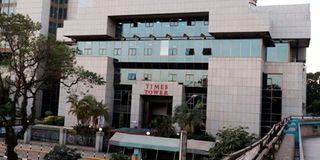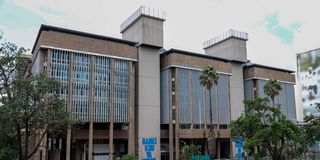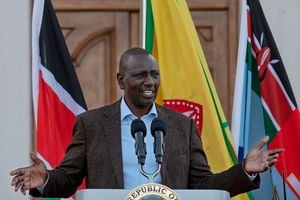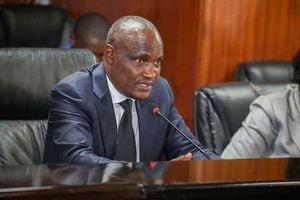
Times Tower in Nairobi, the headquarters of the Kenya Revenue Authority (KRA).
The Kenya Revenue Authority (KRA) has cut the tax rate charged on employee welfare benefits to a two-year low, expecting to pass on the gains of the latest cuts in market lending rates by the Central Bank of Kenya (CBK).
In its latest review, KRA has lowered the fringe benefits tax to nine percent for the next three months until June 2025—the lowest level since January 17, 2023 and comes on the backdrop of a cut in the CBK’s key benchmark lending rate to 10 per cent on Tuesday, down from 10.75 per cent.
The fringe benefits tax is a levy imposed on employees receiving extra welfare benefits, such as cheap loans, in addition to their wages. Taxable employment income in Kenya includes all payments made by an employer to an employee. This will include salaries, wages, bonuses, and fringe benefits received or enjoyed during employment.
“For the purposes of Section 12B of the Income Tax Act, the Market Interest Rate is nine per cent. This rate shall be applicable for the three months of April, May, and June 2025,” Rispah Simiyu, KRA’s Commissioner for Domestic Taxes, wrote in a public notice.

The Central Bank of Kenya (CBK) headquarters in Nairobi.
The fringe benefits tax had been reduced to a one-year-low of 13 per cent in January this year, down from 16 per cent which had been maintained since April last year.
Fringe benefit tax is payable by every employer in respect of a loan provided to an employee, director, or their relatives at an interest rate lower than what the market offers.
The taxable value of fringe benefit is the difference between the market interest rate and the actual interest paid on the loan. Where the term of the loan extends beyond the date of termination of employment, it applies as long as the loan remains due.
Fringe benefits tax is charged on the taxable value of a fringe benefit provided by the employer in a month and is due and payable on or before the 9th of the following month. The prescribed rate of interest is based on the market lending rates as the commissioner may prescribe every quarter of the year. The CBK Monetary Policy Committee (MPC) lowered the benchmark rate for the fifth time in a row on Tuesday as part of sustained efforts aimed at boosting private sector growth and stimulating the economy.
“The committee concluded that there was scope for a further easing of the monetary policy stance to stimulate lending by banks to the private sector and support economic activity while ensuring exchange rate stability,” the CBK said in a statement on Tuesday evening.
Commercial banks are expected to respond to the reduction in the apex bank’s base lending rate by lowering their own rates in a bid to spur credit uptake.











